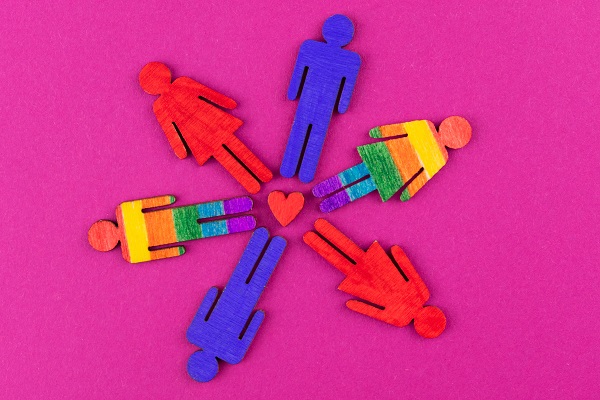Exploring the Spectrum: Understanding Sexual Orientation and Identity

As you ponder the intricate tapestry of sexual orientation and identity, you may find yourself intrigued by the nuances that shape individuals' experiences. The exploration of diverse sexual orientations, from the well-known to the lesser-understood, offers a glimpse into the complexity of human connections. By unraveling the layers of this topic, you can gain a deeper understanding of the rich tapestry of human experience and the significance of embracing diversity. Stay tuned to uncover the profound impact of recognizing and respecting the various ways in which individuals express their authentic selves.
Sexual Orientation Overview
Sexual orientation is a multifaceted aspect of human attraction that encompasses emotional, romantic, and sexual connections. It's an integral component of individual identity, reflecting the diverse range of human sexuality.
Gender identity plays a significant role in shaping sexual orientation, influencing the types of attractions individuals experience. It's important to acknowledge the fluidity that some individuals may experience in their sexual orientation, as attractions can change over time.
Understanding Sexual Identity
Understanding sexual identity involves exploring the connections between orientation, behavior, and expression in relation to one's sexuality. Sexual identity is closely intertwined with gender identity, influencing how individuals perceive and manifest their orientation.
It's important to recognize that sexual identity encompasses more than just attraction; it encompasses one's experience and understanding of gender within the spectrum of human sexuality. This aspect of identity plays a significant role in shaping relationships and interpersonal connections.
Acknowledging the diverse ways in which individuals express their sexual identities is essential for fostering understanding and acceptance of varied human experiences in attraction and relationships. If you are curious, you can check out some Gay Porn Videos.
Philosophical Origins of Love
Exploring the philosophical origins of love, as presented in Plato's Symposium myth, can contribute to a deeper understanding of sexual orientation and identity. The Symposium delves into human desires for emotional connection and intimacy, shedding light on the complexities of human relationships.
This ancient tale has influenced various philosophical theories on the nature of love and relationships, which continue to shape contemporary discussions on sexual orientation and identity. By examining the philosophical roots of love, we can gain insights into the evolution of our understanding of love and human relationships.
Diversity in Sexual Orientations
Sexual orientations encompass a broad range of preferences and attractions, reflecting the diverse nature of human sexuality. It's essential to understand this diversity to promote inclusivity and acceptance in our communities.
Here are some key points highlighting the variety of sexual orientations:
-
Sexual orientations include heterosexual, homosexual, bisexual, asexual, pansexual, and more.
-
Each orientation involves distinct patterns of attraction to others.
-
Embracing the spectrum of sexual orientations contributes to a more understanding and diverse community.
-
Sexual identity extends beyond traditional labels, encompassing a range of orientations.
-
Recognizing and accepting the diversity of sexual orientations is crucial for fostering inclusivity and understanding within society.
Impacts of Coming Out
Coming out can have significant implications for an individual's mental health and overall well-being, regardless of their sexual orientation. It may contribute to enhanced self-esteem and psychological wellness among LGBTQIA+ individuals. However, the process often involves encountering discrimination and bias.
The fear of potential rejection by family, friends, or society can act as a barrier to coming out. Legal safeguards for LGBTQIA+ individuals vary across different regions, influencing the safety and security of those disclosing their sexual orientation.
Regrettably, LGBTQIA+ youth who come out face elevated rates of homelessness and poverty compared to their heterosexual peers. These disparities underscore the need for creating supportive environments and advocating for the rights and welfare of LGBTQIA+ individuals.
Advocacy for LGBTQ+ Rights
Advocating for LGBTQ+ rights involves promoting equality and acceptance for individuals with diverse sexual orientations and gender identities. This advocacy aims to address discrimination and foster a more inclusive society.
Key aspects include: - Promotion of equality and acceptance for lesbian, gay, bisexual, transgender, and queer individuals. - Celebration and visibility of LGBTQ+ identities through Pride events to advocate for equal rights. - Support from resources like helplines and community centers for LGBTQ+ individuals. - Education and awareness campaigns to combat discrimination and promote inclusivity. - Understanding intersectionality to address the complexities of social categorizations in advocating for LGBTQ+ rights.
Conclusion
In conclusion, embracing the spectrum of sexual orientation and identity is essential for promoting inclusivity and acceptance.
By understanding and respecting the diverse range of orientations, we can create a more compassionate and supportive environment for individuals to express their true selves.
Advocating for LGBTQ+ rights and celebrating the uniqueness of each person's journey towards self-discovery is crucial in fostering a more inclusive and understanding society.